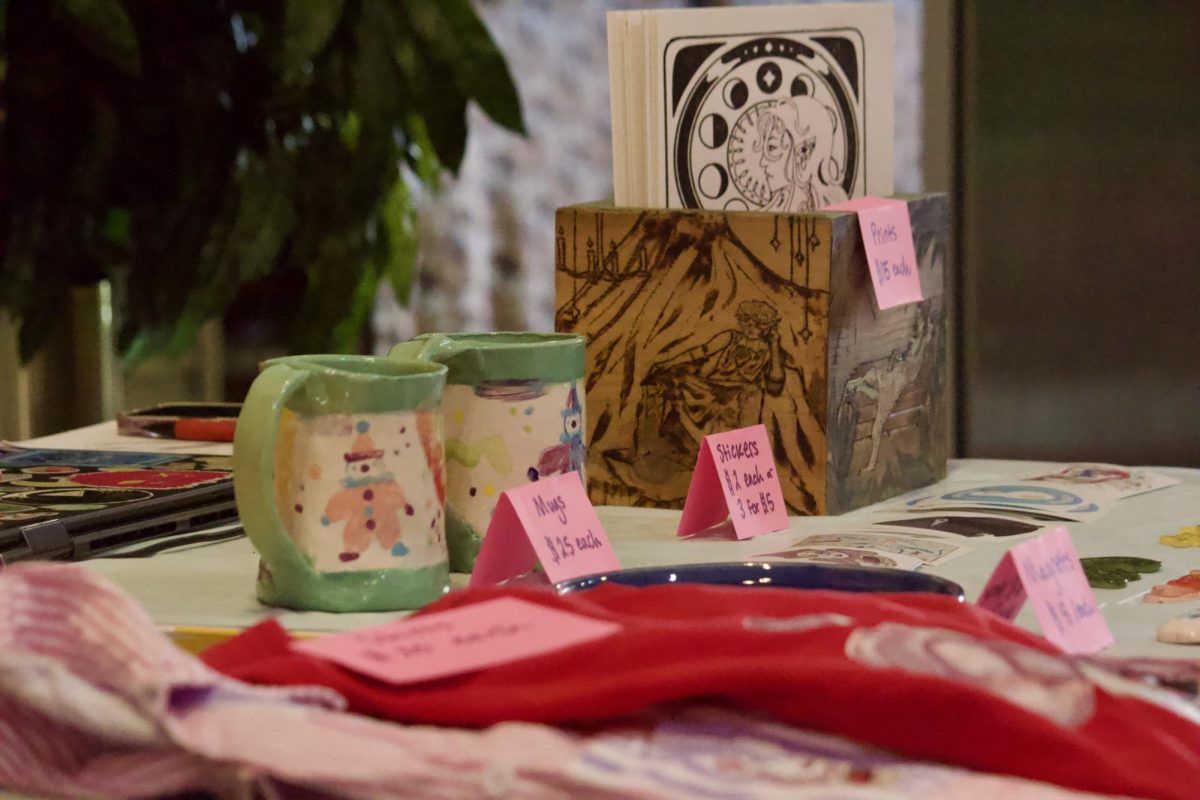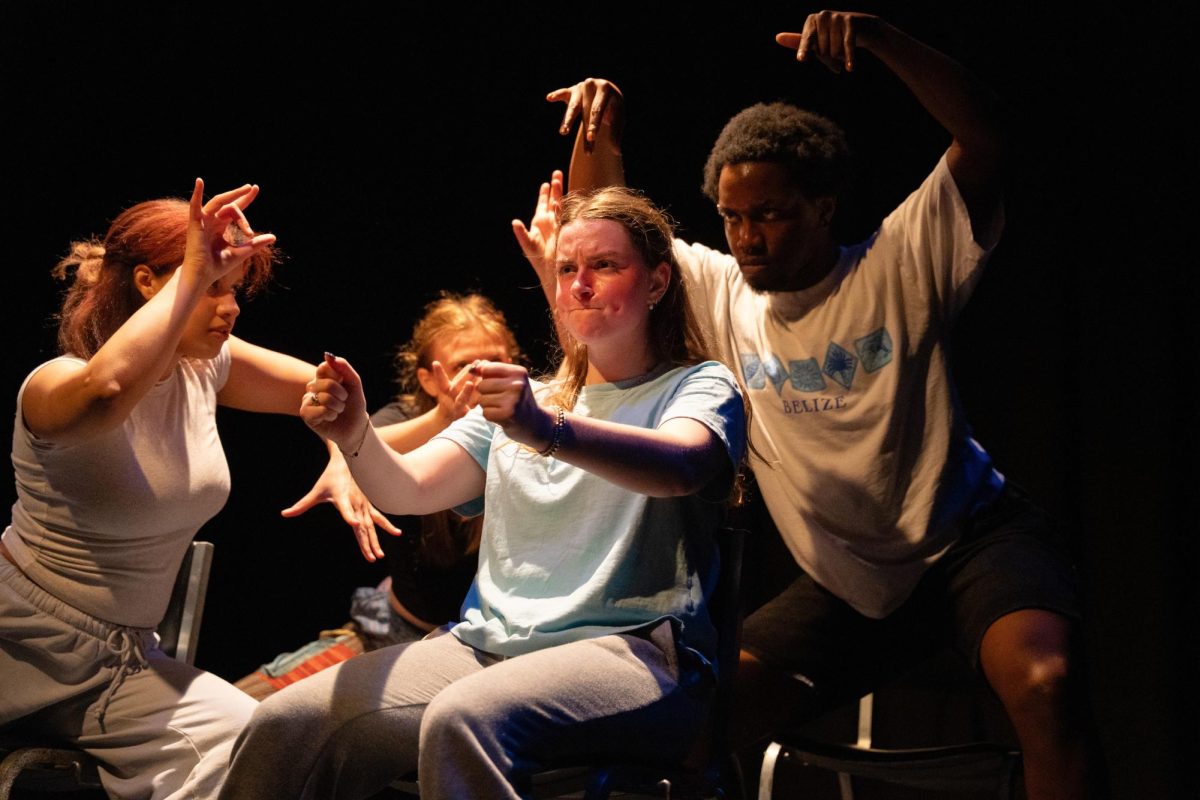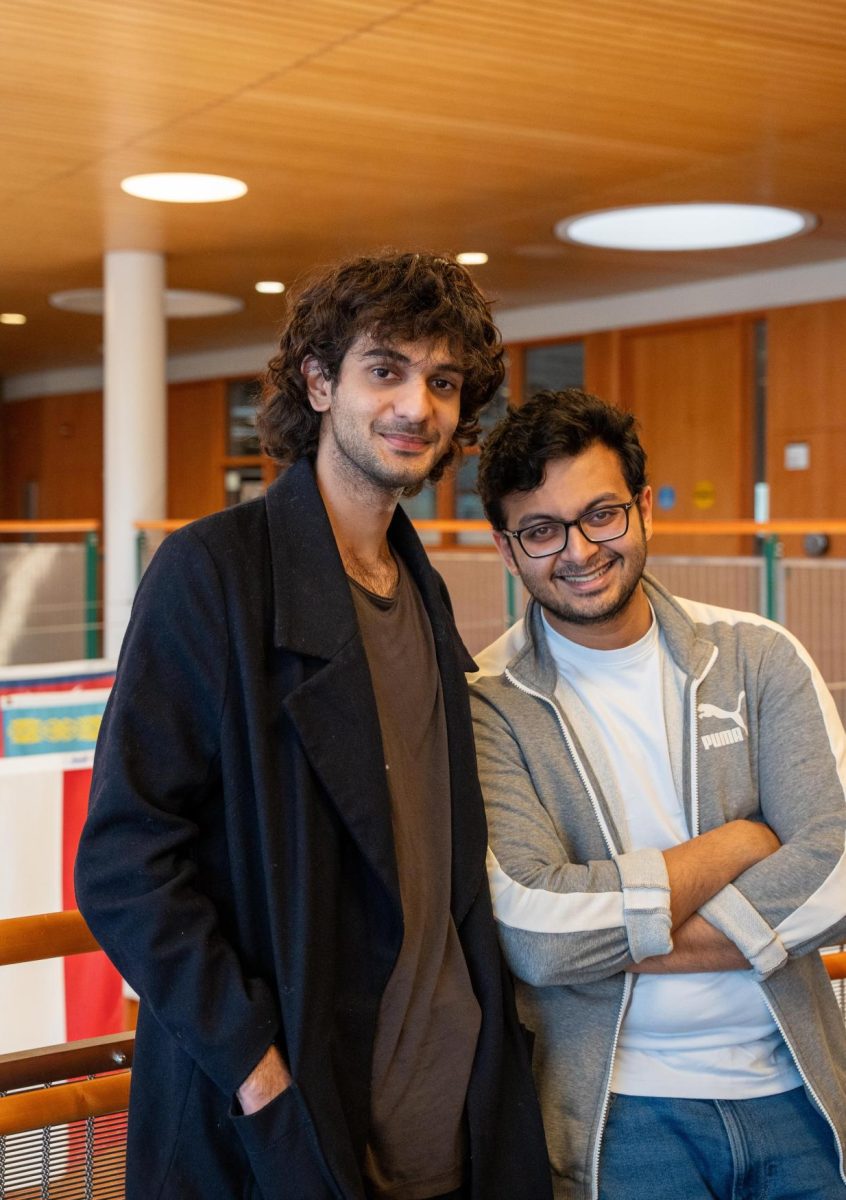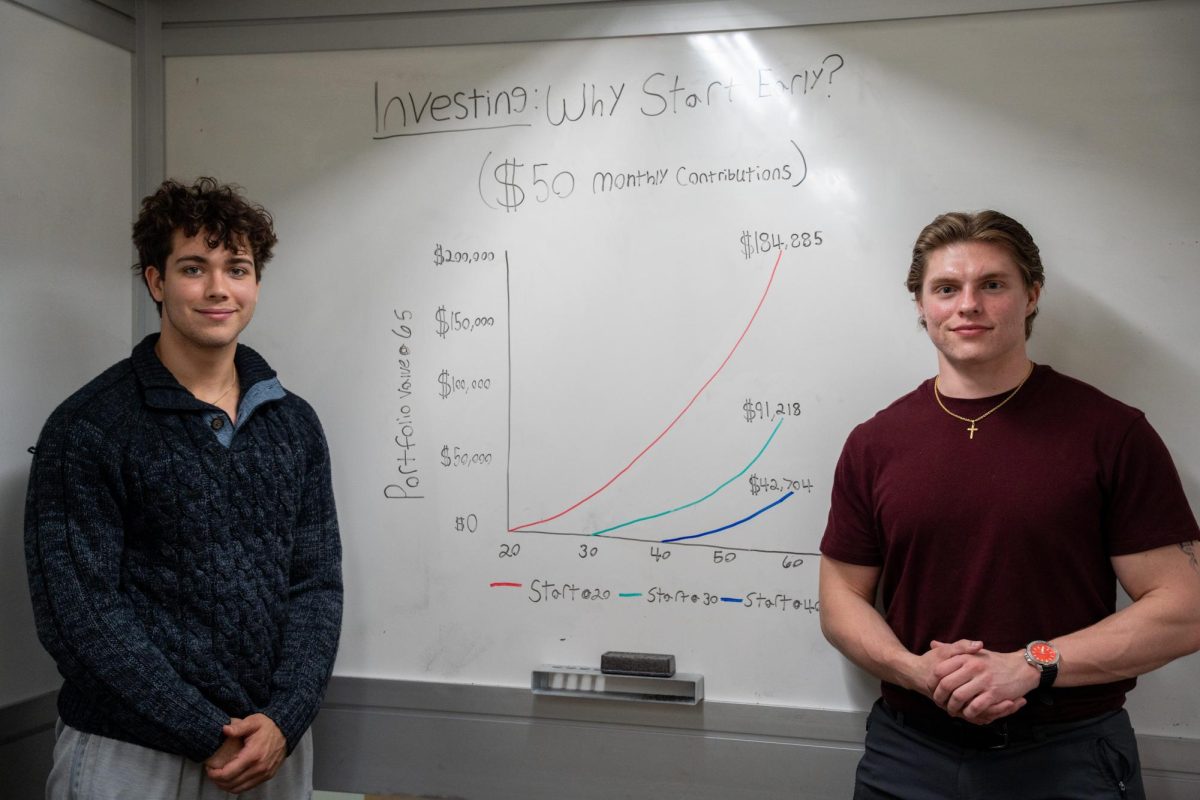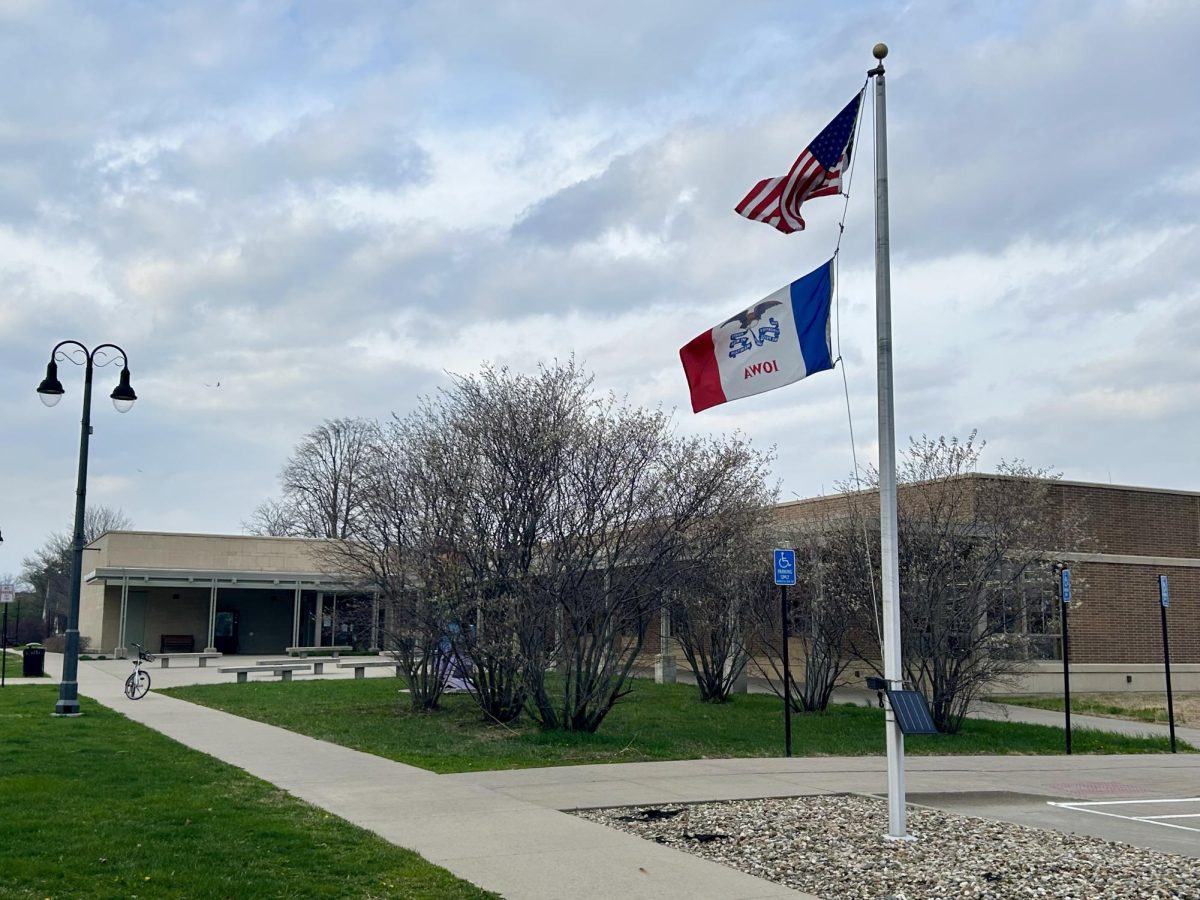Mira Braneck, Staff Writer
braneckm@grinnell.edu
Grin City, a local arts collective, is located on a fourth-generation, 320-acre farm dotted with brightly colored buildings. The property has been home to the collective’s arts residency program for the last ten years. However, as Grin City approaches its tenth anniversary, it will be closing its physical doors and transitioning out of its residency-based program to focus on its other role — supporting public art.
“At least for the past several years, Grin City has had two distinct tracks of programming that were woven together,” said Molly Rideout ’10, co-director of Grin City. “One was the residency, kind of the retreat aspect, and the other was community projects that we do. They were interwoven because the artists and residents were the once helping us execute the community projects. But going forward, after our ten-year anniversary, we’ll be focusing mostly on that community aspect … kind of just choosing to focus on one of the tracks over the other one.”
 Grin City, founded by Joe Lacina, was informally born when Lacina was an undergraduate at Maryland Institute College of Art in Baltimore. A Grinnell native, he would bring fellow art students home for the summer, where they set up studios in an old organic tofu factory on the premises.
Grin City, founded by Joe Lacina, was informally born when Lacina was an undergraduate at Maryland Institute College of Art in Baltimore. A Grinnell native, he would bring fellow art students home for the summer, where they set up studios in an old organic tofu factory on the premises.
“Joe likes to joke that his parents, when they had their midlife crisis, instead of buying cars, built an organic tofu factory and started making tofu,” Rideout said.
Grin City will be hosting its last residents this summer, then it will be shutting its doors and transitioning into a transient organization. The new Grin City will enable artists to go to different communities to work on specific community-based projects. The collective will find them housing for their time working in the communities.
The collective does plan to stay local. “We’ll always be a Grinnell-based organization,” said Rideout. “We’ll be focused in Iowa for a very long time, and maybe in the Midwest as a larger area.”
Rideout has been with Grin City for the past five and a half years. After this summer, she will become the sole director.
“My co-director, Joe, is stepping down,” said Rideout. “The purpose of him stepping down is that he wants to focus on doing farming stuff and doing his own art and starting a family, and he doesn’t want his babies and a bunch of strangers living together. I would feel the same way.”
“Another reason behind this shift that we’re making is that we’ve found that the greater community is much more interested in supporting the community-based projects that we do,” Rideout said. “It’s really hard to support artist residencies because you’re investing in an intangible entity.”
Lacina will still own and run the farm, and Grin City plans to continue its relationship with him.
“A few of our partnerships will still continue with the Lacina family afterwards,” Rideout said.
For example, Grin City will continue to be home to Middleway Farm, run by a Grinnell alum, and two buildings rented out to a Grinnell local who uses the space to raise artisan pigeons for shows. Lacina is also considering using the studios for residencies, but more hand-picked residents rather than holding an open call for applicants, like Grin City currently does. These residencies will not be associated with Grin City.
“[The Lacina family] has been so generous to let us be here for ten years,” Rideout said.
To celebrate its tenth anniversary, Grin City will be having one last hurrah in the form of its annual Rurally Good Festival on June 4, the same weekend as Reunion.
“The whole farm becomes the festival location. We set up a performance space … we have concerts … various workshops … artists will be doing performances, and we’ll have a little gallery set up in one of the spaces. … We’ll have a big bonfire at the end and probably a dance party. People will be welcome to camp overnight that evening,” Rideout said. “When we’ve talked to our artist alumni who have been residents, they have said that even more than the residency, Rurally Good has been one of the most important things that they’ve experienced in terms of networking with other artists, [and] just networking with the community and talking with the community.”
The festival will be free and open to the public.
“This year, the Lacina family who owns the property has been even more generous with us and have covered the cost of everyone’s tickets, so it will be entirely free for everyone to come.”
Grin City has also worked in partnership with the Grinnell Area Arts Council to create the Public Arts Initiative as part of celebrating its tenth birthday. Various projects are currently being produced by artists for the downtown area, and will be unveiled on June 11 during Summerfest.
Rideout thinks that Grin City’s absence will change the art community in Grinnell, but that it will not disappear for good. “I think [our absence] is definitely going to change the nature of it,” Rideout said. “But Grinnell is already an incredibly strong art place, so I don’t think that art is going to go away, in any regard. In the ten years that we’ve been here, the community that has sprung up as a result of it — they’re probably not going to leave any time soon. They’re now invested in the community and want to stick around. And hopefully this new form will allow us to, in some ways, start building that [sense of community] in more communities than just Grinnell.”
Rideout hopes that the new platform will allow for a celebration of a wide variety of communities.
“Our main goal is really to build senses of communities but not with that specific, targeted feeling of twenty-somethings that want a cool place to hang out. … We want to celebrate different communities,” she said. “A lot of communities don’t need to be built; we want to highlight them and share their stories.”








